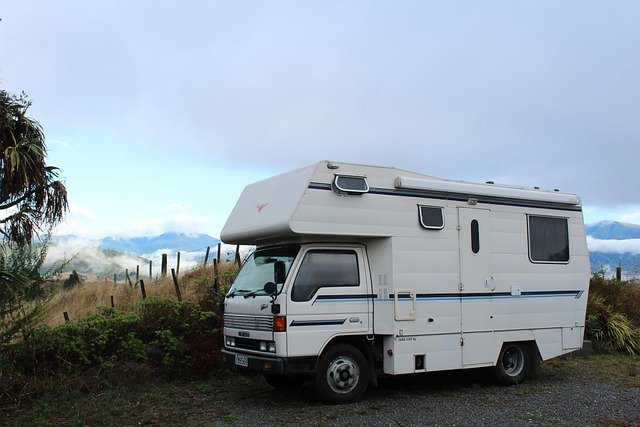You don’t need a fixed address or a 9-to-5 to invest like a pro. You need a broker that survives airports, VPNs, and SIM swaps—without devouring your money in FX markups or freezing your login because you changed countries. This guide is a straight, no-affiliate comparison focused on what matters to traveling investors: access, stability, costs, and custody.
Introduction: Why most brokers fail the nomad test
Most mainstream brokers are built for people who live and trade from one place. The moment you start changing IPs, time zones, and phone numbers, weak points appear. Security systems auto-flag suspicious logins from “new geography,” mobile apps degrade to read-only without data, and support desks clock off while you’re awake on the other side of the world. Even when the platform lets you in, the fee plumbing (hidden FX spreads, conversion “convenience” charges, or punitive withdrawal fees) can quietly siphon a traveler’s returns.
The nomad “failure modes” tend to cluster in four buckets. First, authentication fragility: SMS-only 2FA doesn’t play well with travel SIMs; temporary roaming numbers can break account recovery. Second, currency friction: if you earn in EUR/GBP/MXN and invest in USD, FX conversion becomes a repeating cost—some brokers hide hefty spreads behind “commission-free” banners. Third, product access by residency: as your legal address changes, so does access to US-domiciled ETFs (PRIIPs in EEA/UK), options permissions, or shorting rules. Fourth, support coverage: many brokers can’t help you when you’re awake; they don’t offer 24×5 (or better) human support across continents.
This piece is designed for intermediate investors who already experienced a lockout, a rejected transfer, or a surprise fee. You’ll get a travel-friendly criteria checklist, a platform-by-platform breakdown with custody and conversion realities, and pragmatic test steps to run before you commit. We’ll also highlight red flags—the tells that a broker won’t survive your next border crossing. Where relevant, we cite official sources for investor protection limits, settlement rules, and fees so you can verify before you move funds. Schwab Brokerage+3SEC+3finra.org+3
What makes a broker “travel-friendly”?
A travel-friendly broker isn’t just “available in your country.” It’s a platform whose operational defaults work with an itinerant life: sane security, strong mobile, multiple currencies, and support when you need it. Below we break this into three nomad-critical sub-criteria and show what to watch for when screening candidates.
Mobile app quality and offline features
Mobile is your primary terminal when you’re on the move. A good app does more than place orders; it survives poor connectivity and keeps you functional when airport Wi-Fi drops mid-trade. Look for:
- (1) graceful session persistence with authenticator-app 2FA (TOTP) rather than SMS-only;
- (2) local caching of portfolio and watchlists so you can at least view positions and last known prices offline;
- (3) document center access on mobile to download statements and tax docs on the go;
- (4) order amend/cancel reliability when signal flutters; (5) a clean biometrics + TOTP flow (face/fingerprint unlock backed by an authenticator app, not SMS).
A quiet killer for travelers is geo-sensitive risk control. Some brokers auto-block or challenge logins from “new” countries or when your IP flips too quickly. You can’t fully know this from marketing pages, but you can stress-test it (see “How to test” below): connect via hotel Wi-Fi, then a local SIM, then a VPN exit; confirm you can still log in, place a small order, and download a statement. If the app frequently forces password resets or punts you to email support for “security review,” that’s a sign to walk. Finally, consider notifications: reliable push alerts for filled/canceled orders and margin calls matter when you’re boarding a flight and can’t watch the tape.
Multi-currency support and FX fees
If your income and spending span currencies, FX friction becomes a recurring tax. Travel-friendly brokers provide true multi-currency accounts and transparent conversions. Interactive Brokers (IBKR) is the gold standard here: you can hold multiple base currencies and convert at tiered FX commissions starting around 0.08–0.20 bps via explicit FX trades, or use auto-conversion typically adding about 0.03% to the rate—both pathways published and auditable. Saxo discloses a 0.25% currency conversion markup on non-base trades and transfers. Trading 212 states 0.15% for Invest/ISA FX conversions (higher in AU). These look like small percentages—until you rebalance or fund monthly for years. Always verify your entity’s schedule.
Good multi-currency handling includes: sub-accounts in major currencies, explicit FX trades (so you see commission vs spread), and sensible dividend currency handling (e.g., USD dividends don’t auto-convert to EUR unless you ask). Red flags: “commission-free” claims masking wide FX spreads, auto-conversions you can’t disable, and platforms that can’t hold multiple currencies (forcing conversion on every buy/sell). If you invest across USD/EUR/GBP and withdraw to different country accounts, the FX policy often matters more to your lifetime returns than a $0 ticket commission.
Customer support across time zones
When you’re 9–12 hours off your broker’s home office, support hours matter. 24×5 human support (not just a bot) is a huge win. Schwab International explicitly advertises 24×5 Customer Service with international toll-free numbers. IBKR states 24-hour customer service each business day via regional centers in the Americas, Europe, and Asia. Trading 212 centralizes support through its Help Centre and app; live chat availability can vary by load-balancing policy. Before funding, try all channels you might need while roaming (phone from a VoIP number, in-app chat, web form) and confirm identity verification steps don’t require a domestic phone line. Keep a copy of any PINs or passphrases they issue for phone support.
Key comparison criteria
Even if two brokers pass the nomad sniff test, details in fees, custody, and rules can lead you to different choices. Use these criteria to separate cosmetics from core.
Account minimums and fee structure
Modern brokers often trumpet $0 commissions and no minimums, but the real action is in FX, financing, withdrawals, and inactivity. IBKR publishes a transparent menu for FX, futures, and more; no platform fees and no account minimums on most entities today. Saxo discloses stock commissions from USD/EUR floor amounts plus 0.25% FX conversion; local entities may have transfer fees for withdrawals. Trading 212 markets commission-free Invest/ISA with the 0.15% FX conversion. Don’t compare sticker prices; replicate your actual pattern (monthly EUR→USD conversion + two stock trades + one withdrawal) and compute an effective cost per €1,000 invested. That real-world bundle is what you pay.
If you trade options or non-US markets, check special ticket fees, exchange fees, and whether “commission-free” applies. For cash yields, ask how idle cash is held and remunerated. Some brokers sweep to money market funds or banks with variable rates; others leave cash unremunerated unless you opt-in. These mechanics can swing total returns more than a few cents of commission.
Custody and investor protection (SIPC, FCA, etc.)
A broker’s entity determines your regulatory regime and protection scheme. US accounts at IBKR LLC and Charles Schwab & Co. are covered by SIPC (up to $500,000, including $250,000 cash), often with excess SIPC policies providing additional protection subject to aggregate limits; these schemes protect custody in case of broker failure, not investment losses. European/UK entities differ: Saxo is a member of Denmark’s Depositor and Investor Guarantee Scheme (cash up to €100,000; if securities can’t be returned, up to €20,000). UK-regulated firms (e.g., Trading 212 UK) fall under FCA oversight and FSCS may apply (limits and conditions vary). Always confirm which entity holds your account—protection varies by country and product.
Two practical tips: (1) Diversify custodians if you hold large balances relative to scheme limits; (2) understand segregation—client assets should be held separately from firm assets. Protection schemes don’t cover market losses, derivatives gone wrong, or crypto assets outside regulated custody.
Fractional shares and product availability
Fractionals help travelers deploy irregular cash efficiently. IBKR offers fractional trading on eligible US, Canadian, and European stocks (and certain ETFs). Schwab’s Stock Slices provides fractional purchases for S&P 500 constituents. Trading 212 supports fractional shares broadly across its Invest lineup. Saxo’s documentation and help center indicate support for fractional sizes on certain CFD indices and crypto FX, but not for cash equities—so if fractionals are core to your DCA, note this constraint. Before funding, confirm the asset list in your entity and whether fractionals apply to your markets. help.saxo+5IBKR Guides+5Interactive Brokers+5
Product access also depends on residency. EEA/UK retail clients face PRIIPs/KID rules that limit purchases of US-domiciled ETFs; brokers will block orders without a compliant KID, pushing you to UCITS equivalents. If you change residency mid-journey, your product shelf can change overnight. Check your broker’s policy on existing positions if your classification changes.
Day trading limitations and settlement rules
If you’re active, two rules matter. First, the US Pattern Day Trader (PDT) designation: four or more day trades in five business days in a margin account triggers PDT status and a $25,000 minimum equity requirement. Fall below and you’ll face restrictions until you top up. Second, the US settlement cycle is now T+1 for equities/ETFs (since May 28, 2024), which compresses payment/receipt timelines by a day. If you’re funding from abroad, wires and FX must align with T+1 to avoid “good-faith” violations or failed settlements. Always check how your broker implements PDT and T+1 in your specific entity and whether your account type (cash vs margin) changes the constraints.
Platform-by-platform breakdown
Interactive Brokers (IBKR): The power user choice
Why nomads like it. IBKR is the closest thing to a global account router: multi-currency balances, explicit FX trades with tiered commissions (or small auto-conversion markups), deep market access, and 24-hour business-day support via regional desks. Fractional trading spans US, Canadian, and European stocks (and some ETFs), handy for DCA when your income is lumpy on the road. IBKR also supports extended/overnight trading on thousands of US names via partnerships (e.g., Blue Ocean ATS), which helps when your local time doesn’t overlap with US market hours.
Costs & currency. You can either place an FX trade (paying a small, disclosed commission—often 0.08–0.20 bps with a $2 minimum) or let IBKR auto-convert around 0.03% from the rate. There are no platform fees and no account minimums on most retail entities today, but always check your region’s schedule.
Custody & protection. US accounts at IBKR LLC get SIPC coverage to $500k (cash sublimit $250k) plus excess SIPC from Lloyd’s (additional per-account coverage subject to aggregate caps). Non-US IBKR entities (IE, UK, AU, etc.) fall under local schemes (e.g., ICS/FSCS) with different limits. Confirm your account’s entity during onboarding.
Drawbacks. The Pro-grade tools can feel heavy; approval for options/shorts depends on your residency/experience; and the learning curve is real. Still, for multi-currency, multi-market nomads, IBKR remains the benchmark.
Schwab International: US expats’ favorite
Why nomads like it. Schwab International is aimed at non-US residents who want US market access with a big-bank feel. The 24×5 international service, toll-free numbers, and strong retail tooling make it predictable if you’re US-focused and want a traditional brand behind your account. Schwab Stock Slices™ allows fractional S&P 500 purchases from small dollar amounts, which can help with cash-flow-aligned DCA.
Costs & currency. Commissions on US stocks/ETFs are often $0, but watch FX if you fund in non-USD—Schwab’s core literature focuses on US investors, so conversion mechanics for international clients can be less transparent than IBKR’s line-item FX trades. Test a small EUR/GBP→USD transfer and compare landed dollars to an independent mid-market rate.
Custody & protection. US accounts are covered by SIPC; Schwab also carries excess SIPC up to an aggregate $600M, with per-customer sub-limits. Again, protection is about broker failure, not market loss.
Drawbacks. Product shelf is US-centric; tooling for multi-currency power users is thinner versus IBKR; residency eligibility varies by country list at onboarding.
Saxo Bank: European alternative
Why nomads like it. Saxo is a polished European platform with broad market access, good research, and multi-currency sub-accounts. It’s popular with EEA residents who want a single broker for cash equities, ETFs, options, and futures with clean UX—and who value a clear, public currency conversion policy.
Costs & currency. Saxo discloses 0.25% for currency conversion on non-base trades and cash transfers between sub-accounts. Stock commissions vary by market (e.g., US from $1, DE from €3). Always price your typical use case (EUR income → USD equities → EUR withdrawals).
Custody & protection. Saxo is a member of Denmark’s Depositor and Investor Guarantee Scheme: cash up to €100,000, and if securities cannot be delivered back, up to €20,000. That’s different to US SIPC; understand how your entity holds client assets and what “segregation” means in your jurisdiction.
Drawbacks. Cash-equity fractionals aren’t broadly available (fractional CFD indices/crypto FX exist, not the same as owning shares). If you rely on fractionals for DCA, this is a constraint.
Trading 212: Commission-free option
Why nomads like it. Trading 212 offers a slick mobile-first experience, broad fractional shares on Invest accounts, 24/5 trading sessions on US stocks, and a clean 0.15% FX conversion for Invest/ISA (different in AU). If your strategy is “buy world equities and a few ETFs in small, regular tickets,” the UX is hard to beat.
Costs & currency. The headline is commission-free with a transparent 0.15% conversion. That’s higher than IBKR’s explicit FX but lower than some legacy brokers. If you DCA monthly, compute the actual FX drag over a year.
Custody & protection. Trading 212 UK Ltd is FCA-authorised; FSCS may apply subject to conditions/limits. The group spans multiple regulators (UK, BG, CY, AU), so your entity determines the scheme. Verify where your account is booked and how cash is safeguarded (e.g., safeguarded with e-money partners or pooled client bank accounts).
Drawbacks. Support is largely in-app/help-center and live chat availability can vary. Product access depends on your entity and residency; advanced order types and pro tooling are lighter than IBKR.
Others worth considering
If none of the above fit your pattern, shortlist TradeStation Global (strong desktop tools; international programs), tastytrade (options-centric, best for US-focused derivatives), or MEXEM/regional IBKR Introducing Brokers if you want IBKR’s plumbing with localized service. As always, validate residency eligibility, FX policy, and custody before funding.
Comparison table: fees, features, and restrictions
| Broker | Multi-currency & FX | Fractionals | Investor protection (entity) | Time-zone support | Notes |
|---|---|---|---|---|---|
| IBKR | Explicit FX trades (≈0.08–0.20 bps + $2 min) or auto-convert (~0.03%); multi-currency balances | Yes (US/CA/EU stocks; some ETFs) | US: SIPC $500k (+ excess); EU/UK: local schemes | 24h business-day global desks | Strongest for heavy travelers and power users. |
| Schwab International | USD-centric; check non-USD funding/FX mechanics | Stock Slices (S&P 500) | SIPC + excess (aggregate up to $600M, per-customer sub-limits) | 24×5 international lines | US-focused comfort; confirm your country eligibility. |
| Saxo Bank | 0.25% conversion; multi-currency sub-accounts | No (cash equities); fractionals on some CFD indices/crypto FX | DK DGS: cash €100k, securities shortfall €20k | Regional hours | Great UX; watch FX and cash-equity fractionals. |
| Trading 212 | 0.15% conversion (Invest/ISA; AU 0.40%) | Yes (broad) | FCA firm; FSCS may apply (limits/conditions) | App/help-center; variable live chat | Clean mobile; test support responsiveness from abroad. |
Figures/coverage vary by entity and can change; verify on the broker’s current fee/protection pages before funding.
Red flags: Brokers to avoid as a nomad
- SMS-only 2FA with no authenticator app option (breaks when you swap SIMs or your roaming fails).
- Opaque FX: “commission-free” trading but wide, undisclosed currency spreads; forced auto-conversion with no explicit trade ticket.
- Limited residency support: if the broker frequently offboards entire countries/entities, your account can become unusable mid-trip.
- Support closed when you’re awake: no 24×5 human channel, or identity procedures that require domestic phone numbers.
- Custody gray zones: no clear statement of segregated client assets, vague language around protection schemes, or cross-border booking that leaves you in a weaker regime.
- Withdrawal friction: fees for routine bank transfers, or funding only via cards/fintech rails that reverse unexpectedly when you’re abroad.
Run away from platforms that can’t tell you exactly how they convert currencies or protect your assets in a failure. Investor protection and FX are first-principles, not footnotes. Interactive Brokers+1
How to test a broker before committing
Treat this like a pre-deployment drill:
- Login stress test. In 24 hours, log in over hotel Wi-Fi, local SIM, and a VPN exit. Ensure TOTP 2FA works on all three. Attempt a small order place/amend/cancel in each session; download a statement. If any login locks you out or triggers a multi-day review, consider that a fail.
- FX transparency test. Convert a small amount (e.g., €100→USD). Compare landed dollars to an independent mid-market rate. Can you do an explicit FX trade with a stated commission? Is the markup documented (e.g., 0.25%, 0.15%, 0.03% auto)? IBKR and Saxo publish these figures; Trading 212 declares 0.15% for Invest/ISA. Interactive Brokers+2home.saxo+2
- Support time-zone test. Call the international line or open live chat outside US/EU business hours. Confirm the SLA and what’s needed to authenticate by phone (PIN/passphrase). Schwab lists 24×5 support; IBKR states 24-hour business-day coverage. Schwab Brokerage+1
- T+1 & funding rehearsal. Place a tiny buy in a cash account and ensure you can fund/settle within T+1 using your typical rail (SEPA/SWIFT/ACH). This is where wire timings and FX latencies surface. SEC+1
- Residency toggle. Ask support what happens to your product access (e.g., ETFs) if you change from EEA→LatAm or vice versa. Get it in writing (help ticket). PRIIPs limits will differ.
If a broker passes all five, it will likely survive your next border hop.
Migration guide: switching brokers while traveling
Switching while mobile isn’t fun, but it’s doable with a plan.
Step 1 — Flatten complexity. Close options and margin-sensitive positions first; transfer fully paid securities. If you need to move open positions, check whether your destination broker supports in-kind ACATS/transfer equivalents cross-border. Expect constraints outside the US.
Step 2 — Prep custody docs. Download all statements, trade confirms, and tax forms before you request a transfer. Some brokers restrict document access once an account is in transfer/closure status.
Step 3 — Sequence cash & FX. If the destination broker gives you a multi-currency account (e.g., IBKR), consider converting at the cheaper venue first, then transfer. If both sides charge for incoming/outgoing wires (or hide FX), do the math. Saxo, for example, is transparent about 0.25% currency conversion; Trading 212 Invest declares 0.15%; IBKR can be far lower via explicit FX trades.
Step 4 — Keep two-factor continuity. Add the new phone and authenticator before you fly. Store emergency recovery codes offline. Ensure both brokers have a non-SMS second factor (TOTP or hardware key) bound.
Step 5 — Do a dress rehearsal. Place a test order and a test withdrawal at the new broker before closing the old one. Confirm support answers within your active time zone. Schwab lists 24×5; IBKR advertises 24-hour business-day coverage.
Step 6 — Tax trail. Keep overlapping access for one full statement cycle to reconcile cost basis and dividend tax (1042-S for non-US persons in US accounts, local equivalents elsewhere). Open a support ticket if you need CSV exports.
Pick based on your travel pattern
If your trip is US-centric and you want a big-brand retail experience with hand-holding, Schwab International is a friendly fit (and it’s explicit about 24×5 support and SIPC + excess coverage). If you’re a multi-currency power user who values explicit FX, cross-market access, and global support desks, Interactive Brokers remains the nomad’s workhorse. If you’re an EEA traveler who prioritizes slick mobile UX and small, frequent DCA buys, Trading 212 is compelling—just price the 0.15% FX drag. Saxo suits EEA investors who want a polished platform and don’t rely on cash-equity fractionals, accepting 0.25% conversion as the price of convenience.
Match the broker to your pattern: where you’ll reside (legally), which currencies you earn/spend, the hours you’re awake, and what you actually buy. Then run the five-point test before moving real money. A travel-friendly broker should get out of your way—so you can board, land, and keep compounding without the platform becoming the story.



